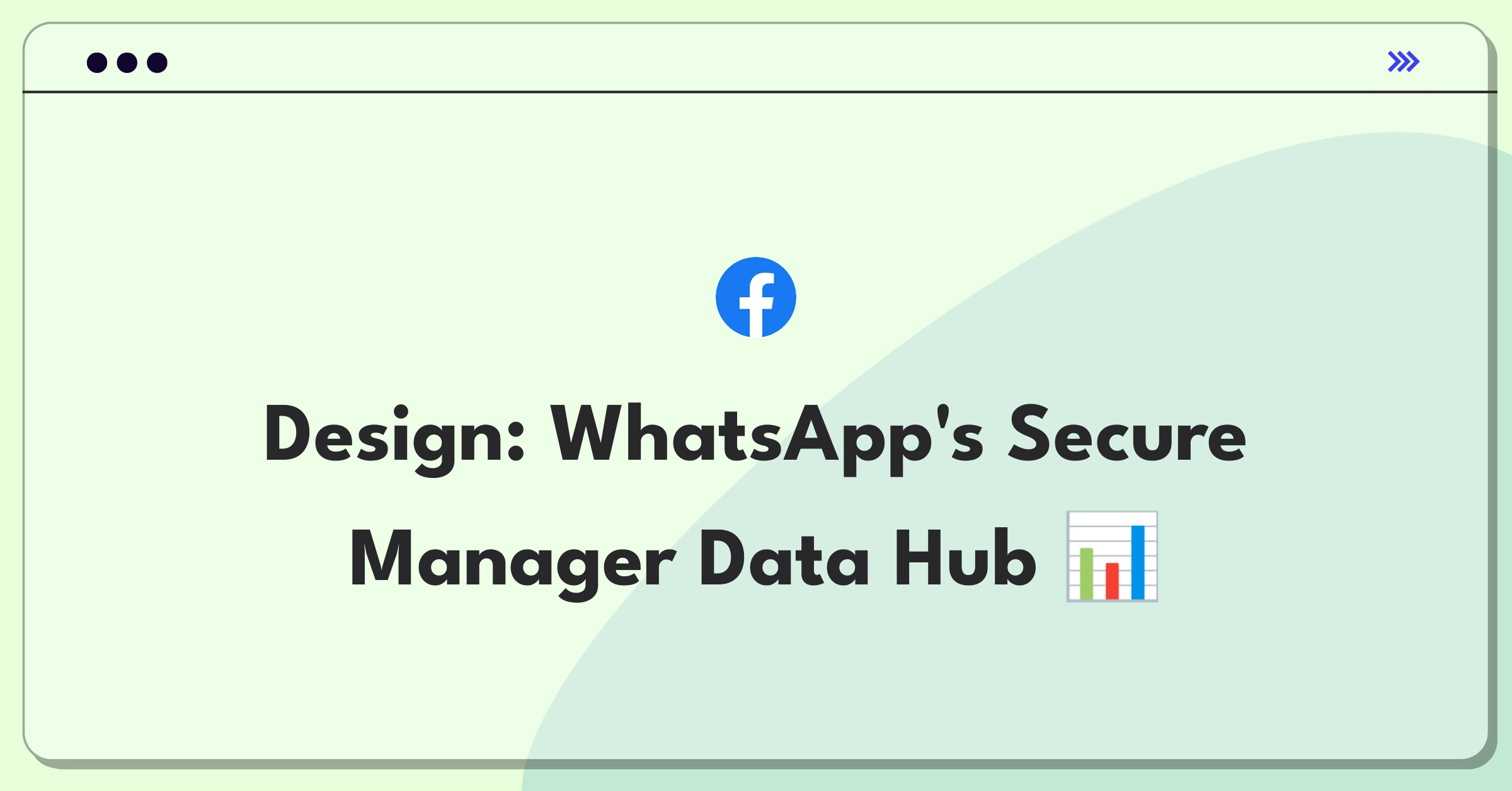Designing a Data Collection Feature for Company Managers in WhatsApp
To design a data collection feature for company managers in WhatsApp, we'll implement a secure, scalable system that integrates with the existing chat infrastructure. The solution will include role-based access control, encrypted data storage, and analytics capabilities while maintaining WhatsApp's core user experience.
Introduction
The challenge at hand is to design a feature within WhatsApp that enables data collection for company managers. This task requires careful consideration of WhatsApp's existing architecture, security protocols, and user experience. Our goal is to create a seamless, secure, and efficient solution that meets the needs of company managers without compromising the app's core functionality or user privacy.
I'll approach this problem by first clarifying the technical requirements, analyzing the current state of WhatsApp's architecture, proposing technical solutions, outlining an implementation roadmap, defining metrics for success, addressing potential risks, and concluding with a long-term technical strategy.
Tip
Throughout this process, we'll need to balance the technical implementation with WhatsApp's commitment to end-to-end encryption and user privacy.
Step 1
Clarify the Technical Requirements (3-4 minutes)
"Given WhatsApp's focus on end-to-end encryption, I'm assuming we need to maintain this level of security for the data collection feature. Can you confirm if this is a hard requirement, or if there's flexibility for business use cases?
Why it matters: This will significantly impact our approach to data storage and transmission. Expected answer: End-to-end encryption must be maintained. Impact on approach: We'll need to design a system that collects and processes data without compromising encryption."
"Considering WhatsApp's global user base, I'm thinking about the scale of this feature. Are we looking at implementing this for all business accounts globally, or is this a phased rollout starting with specific regions or account types?
Why it matters: This affects our architecture design and deployment strategy. Expected answer: Phased rollout starting with enterprise accounts in select regions. Impact on approach: We can design a modular system that can be gradually scaled up."
"Looking at WhatsApp's current feature set, I'm curious about the integration points for this new functionality. Are we considering this as a standalone feature within business chats, or should it be integrated with existing business tools like catalogs or quick replies?
Why it matters: This influences the user experience design and backend integration complexity. Expected answer: Integration with existing business tools is preferred. Impact on approach: We'll need to design APIs and data models that can interact with current business features."
"Given the sensitive nature of business data, I'm considering the compliance requirements. Are there specific data protection regulations (like GDPR or CCPA) that we need to address in our design?
Why it matters: This impacts our data handling, storage, and user consent mechanisms. Expected answer: Compliance with major data protection regulations is mandatory. Impact on approach: We'll need to implement robust data governance and user consent features."
Tip
Based on these clarifications, we'll assume that maintaining end-to-end encryption, scalability, integration with existing business features, and compliance with data protection regulations are key requirements for this feature.
Subscribe to access the full answer
Monthly Plan
The perfect plan for PMs who are in the final leg of their interview preparation
$99 /month
- Access to 8,000+ PM Questions
- 10 AI resume reviews credits
- Access to company guides
- Basic email support
- Access to community Q&A
Yearly Plan
The ultimate plan for aspiring PMs, SPMs and those preparing for big-tech
$99 $33 /month
- Everything in monthly plan
- Priority queue for AI resume review
- Monthly/Weekly newsletters
- Access to premium features
- Priority response to requested question


.png)